Caviar’s greatest shortcoming is that it can be intimidating.
Like choosing a bottle of wine from a list or ordering oysters off an extensive raw bar menu, the choices can feel overwhelming… especially with a high price tag that raises the stakes. Add in a murky history of smuggling, overfishing, environmental degradation, and... eh, why even bother?
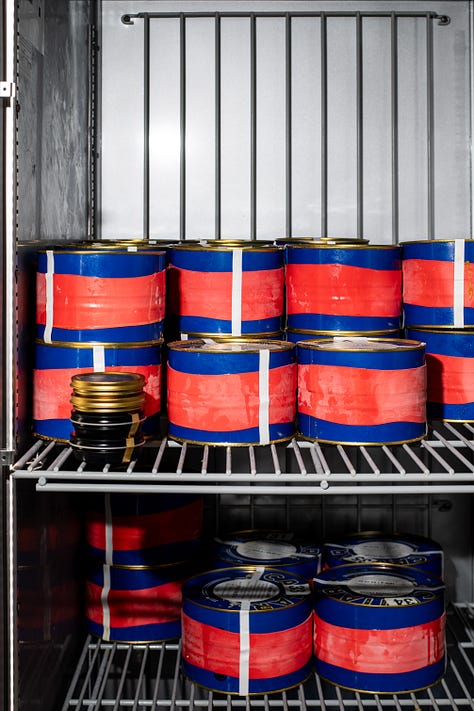
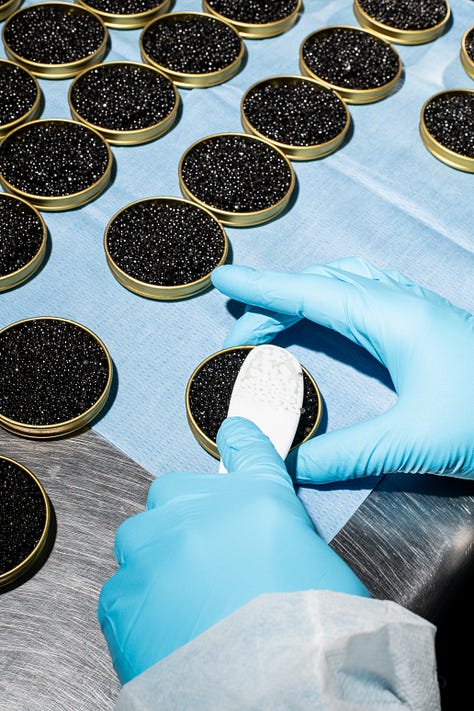
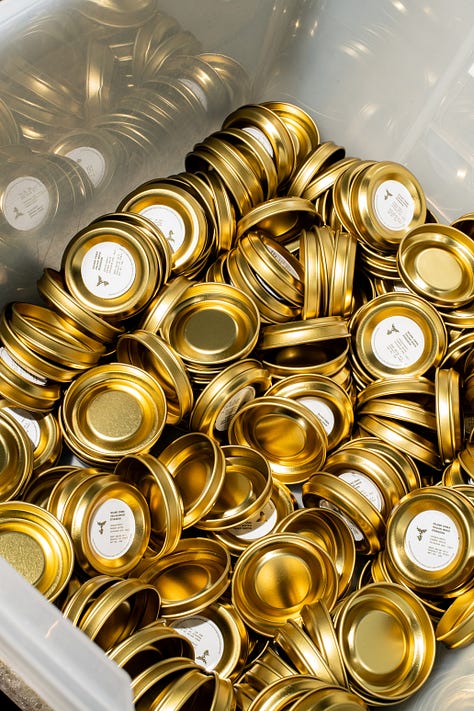
Years to Make – and Seconds to Ruin
But here's the thing: it takes seven to thirteen years to raise a sturgeon for caviar, and about two seconds to ruin it with careless packing. See some examples below…
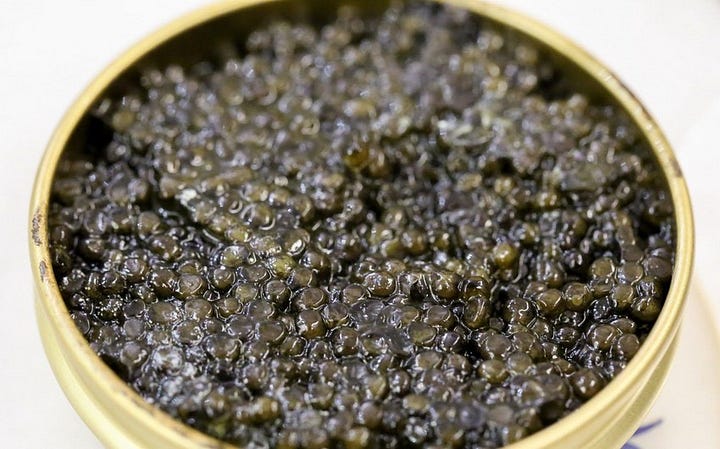
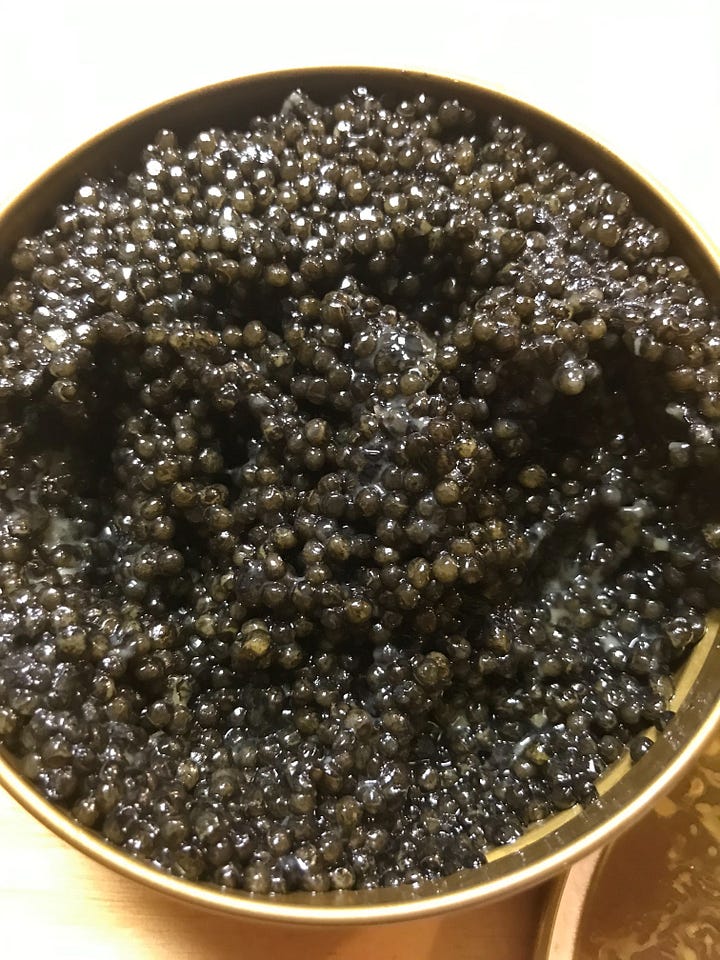
Texture
is one of the most important markers of quality in caviar, right alongside flavor, color, and bead size (though we’d argue the last two are mostly aesthetic). If the beads are crushed in a careless pack job, you're not just losing texture – you're losing the product you paid handsomely for.
Today, it feels like caviar brands are multiplying like the proliferation of protein-infused popcorn and prebiotic sodas.
Sleek tins with pretty labels and questionable pairings might catch your eye while simultaneously wondering:
Isn’t this stuff expensive?
Do people actually eat this all the time?
WHY?!
After nearly eight years selling caviar and 30+ years of farming oysters, we've always taken the stance that beautiful food made with integrity doesn’t need to be reserved for white tablecloth dining rooms, blinis, or raised pinkies.
Eat it how you want, but if you’re going to pay for caviar, you might as well get the full, legitimate expression. No gimmicks or riding shotgun on the trend bandwagon. No kuchisabishii (Japanese for “lonely mouth”, that itch to eat solely for the sake of eating something) here.
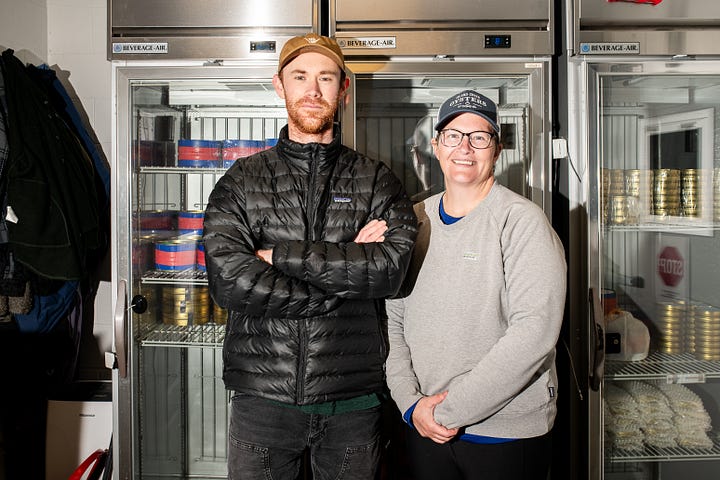
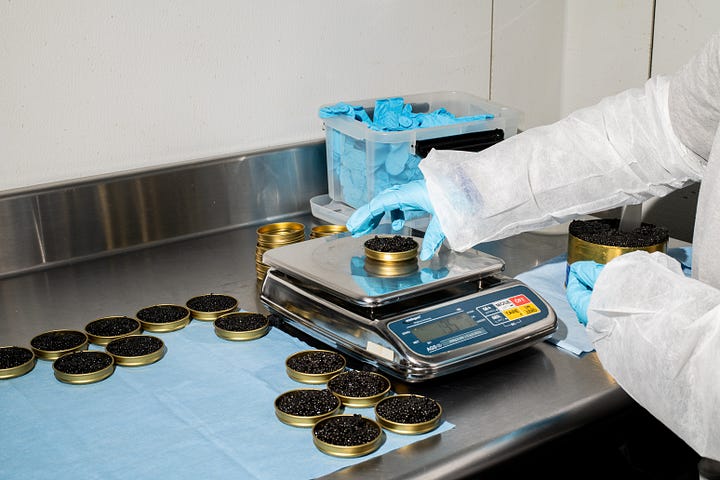
So how do we protect that all-important texture?
Just how we built our own oyster hatchery instead of buying seed, we built our own caviar packing room. Rather than sticking a shiny label on a pre-sealed tin we've never seen, we work directly with caviar farms and hand-pack every tin ourselves. It’s the next-best thing to running our own sturgeon farm.
If that sounds intense, consider this: hand-packing caviar is like being able to taste every bottle of wine or pre-shuck every oyster before offering it to guests.
Most modern caviar brands rarely taste – let alone SEE – their product. But by sourcing original tins straight from sturgeon farms and working hands-on, we get to collaborate more closely with producers, give better feedback, and ultimately, share a better product with chefs and home cooks, order after order.
Sooo, tell us.
What do you look for in a caviar? Have you dove head first into this murky world or still in the dip-your-toe-in phase?







